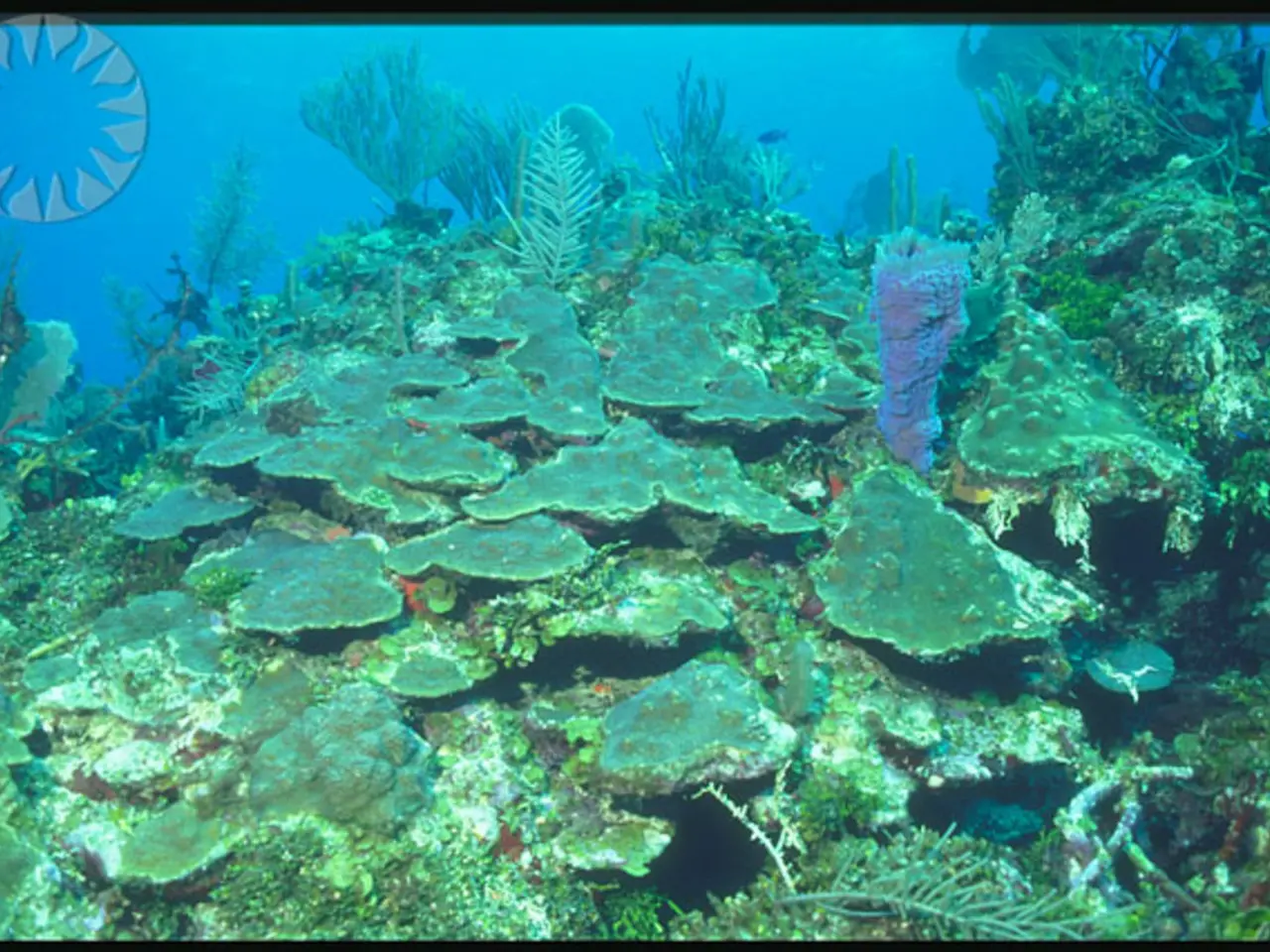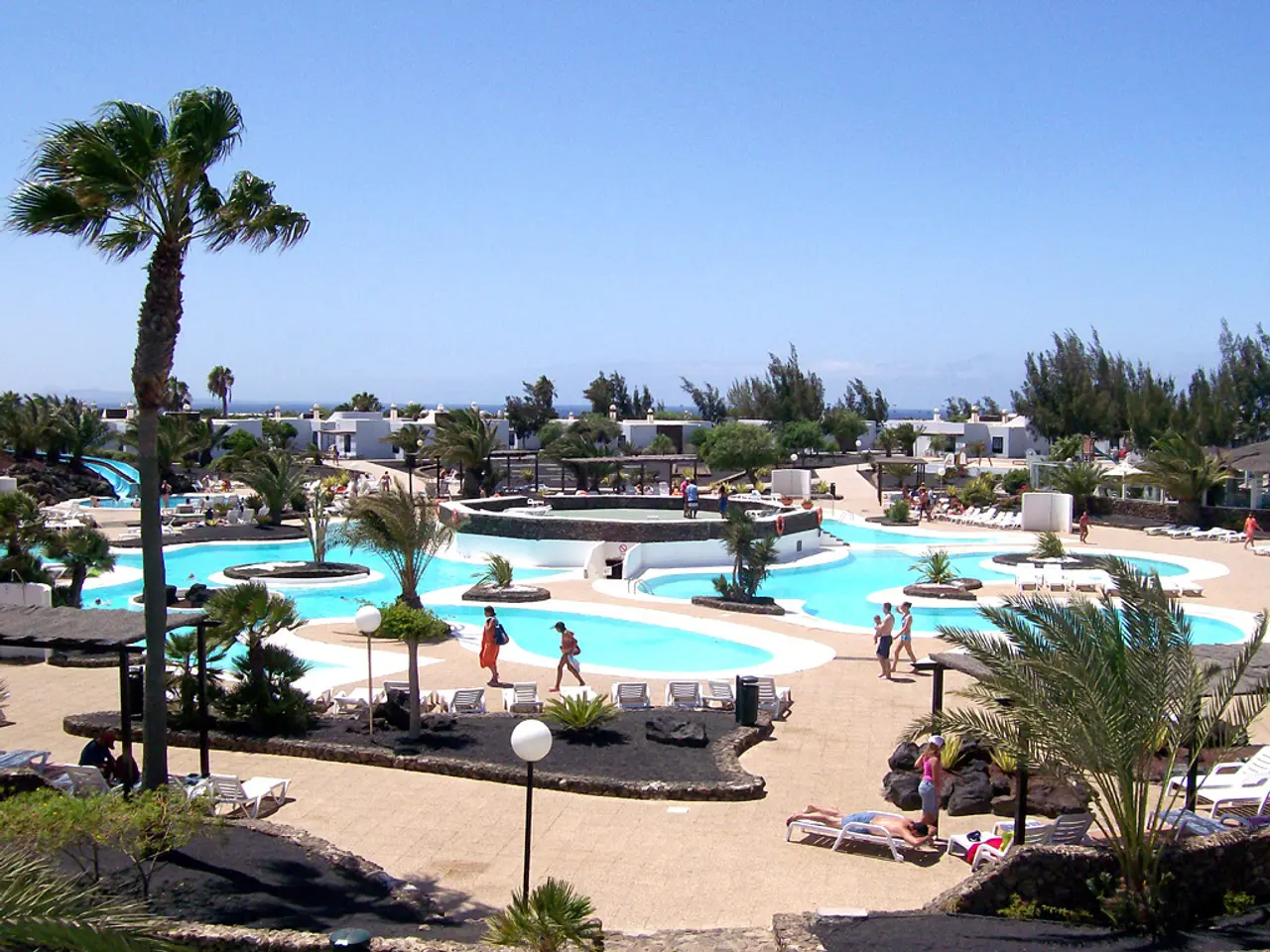Restrictions on Swimming in Lake Werder: Here's Information About the Outbreak of Disease
### Title: The Invasive Water Hyacinth Threatens the Werdersee and Its Community
The Werdersee, a popular recreational lake in Bremen, Germany, is currently grappling with an invasive species - the water hyacinth (*Eichhornia crassipes*). Originating from South America, this fast-growing plant has found a conducive environment in the lake's nutrient-rich waters, posing significant challenges to the ecosystem, human activities, and public safety.
### Growth and Spread of Water Hyacinth
The water hyacinth is renowned for its rapid growth and reproduction. Under optimal conditions, it can double its biomass in just 5 to 15 days, forming dense mats on the water surface. These mats, made up of spongy, buoyant leaves, are capable of blocking sunlight from reaching submerged plants, thereby hindering their photosynthesis and leading to a decline or local extinction of native aquatic flora.
The water hyacinth spreads not only through sexual reproduction but also by vegetative propagation, where small plant parts break off and form new plants. This rapid multiplication allows the plant to quickly cover large water areas, as seen in the Werdersee.
### Ecological Impact
The proliferation of water hyacinth in the Werdersee has led to a significant reduction in biodiversity. By outcompeting native aquatic plants, it disrupts the balance of the ecosystem, affecting oxygen production, habitat provision, and food sources for native fauna.
Moreover, the decomposition of large masses of water hyacinth consumes oxygen in the water, leading to hypoxic or anoxic conditions that stress or kill fish and other aquatic organisms. The thick mats also alter water flow and temperature, further disrupting native species' habitats and breeding grounds.
### Impact on Human Activities
The presence of water hyacinth in the Werdersee poses numerous challenges to recreational activities, particularly swimming and rescue operations. The thick vegetation creates a physical barrier on the water surface, making swimming dangerous or impossible in infested areas. This has led to swimming restrictions in large parts of the lake.
Dense mats also hinder water rescue efforts by restricting boat movement and access to individuals in distress, potentially delaying emergency responses. For swimmers and small boats, the tangled roots and dense plants can cause entanglement or damage, increasing risk during water activities.
### Addressing the Issue
The Bremen Sports and Environment Department have joined forces to pay for the clearing of the bathing area, with estimates putting the cost at approximately 20,000 euros. The city of Bremen plans to learn from the current situation and investigate ways to better combat the spread of water hyacinth next year.
It is crucial to note that the water hyacinth is not poisonous, but its presence in the Werdersee poses numerous dangers. Anyone with water hyacinth in their aquarium should never dispose of it anywhere it doesn't belong, as it can contribute to the spread of this invasive species.
Clearing the entire Werdersee of the water hyacinth is hardly possible due to its size (more than 12 kilometers long). However, ongoing efforts to control its growth and manage its impact are essential to protect the ecological health and usability of the Werdersee.
In their attempt to combat the invasive water hyacinth in the Werdersee, the Bremen Sports and Environment Department has collaborated to allocate funds for clearing the bathing area, a cost estimated to be approximately 20,000 euros. Meanwhile, the city of Bremen is investigating methods to effectively prevent the spread of this invasive species in the future.
In addition to posing challenges for human activities, the presence of water hyacinth in aquariums should not be disposed of anywhere it doesn't belong, as it may contribute to the further spread of this invasive species in other environmental-science contexts, negatively impacting various ecosystems.






